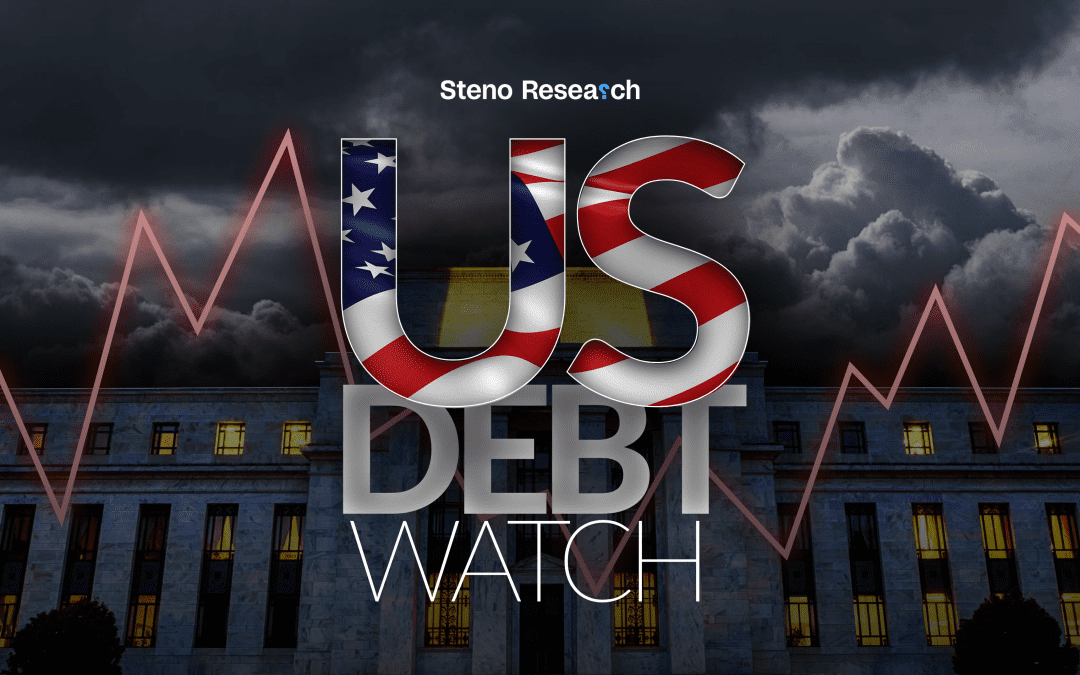We are starting to see some compelling risk/rewards in betting on higher interest rates again, not least in Europe. We will get news from the US Service sector today setting the scene for the nationwide PMIs later this month.


We are starting to see some compelling risk/rewards in betting on higher interest rates again, not least in Europe. We will get news from the US Service sector today setting the scene for the nationwide PMIs later this month.

Are US cycle indicators rebounding right, left and center in coming months, and will inflation expectations follow? It sure looks like it from our model package. Meanwhile, don’t expect the Chinese rate cut to lead to metals buying.

What if the Fed is wrong, we are wrong, and the consensus is wrong? Here’s a look at liquidity, rates, and commodities amidst a macro landscape with a very broad outcome space for the coming 12-18 months.

It’s been a muddy July, not only weather-wise, but also in markets. The signs of an equity rotation, the turning tide in USDJPY, the metals volatility & softer rates probably align. Maybe the stars are finally gearing up for a risk-friendly 4-6 weeks upcoming?

The technology equity sell-off of the most recent trading days feels reminiscent of the crypto sell-off in late June and early July. Can we explain the recent moves in high-beta assets with liquidity trends or are idiosyncratic flow factors in play?

Exports of Copper from China are THROUGH THE ROOF, which is a strong hint that the local consumption is on the floor. The CCP plenum has not addressed the short-term activity, meaning that the West will be flooded with Copper now.

The CBO has markedly worsened the deficit outlook since the last issuance update from the US Treasury in April. Expect the Treasury to communicate a sizable increase in the issuance target, but also expect them not to follow through on it. Let’s look at why.

In this primer on USD liquidity, we aim to discuss why and when liquidity matters, and also highlight the two major drivers of liquidity until New Year’s. Liquidity will continue to improve.

The Chinese retail buying of gold continues, but Western funds now also see a compelling real-rates case to join the party. The big question is whether the USD will weaken sufficiently to reduce the Asian demand for precious metals.

The Trump trade is currently gaining traction, but for how long? There is still a long way to November and Biden remains in power for now. Retail Sales numbers from the US will be interesting today.

Will the UK economy keep delivering out of the ordinary inflation numbers despite the disinflation seen elsewhere, and will the US consumer rise from the weather abyss seen in April/May? Let’s have a look at the week ahead!

All talk about Biden will likely fall silent after the attempted assassination of Donald Trump. Will a “Messianic” Trump impact the markets in the weeks ahead? Meanwhile, the hot PPI report on Friday served as a friendly reminder to still care about inflation.

The PPI serves as a friendly reminder of the cyclical dynamics brewing beneath the surface of the global economy, which contrasts with the current sentiment. We are not convinced of a major slowdown, but we obviously find insurance cuts more likely than a few weeks ago. Here is how to play it..

A surprising index-weighted sell-off occurred on the back of a “home-run” inflation report for doves. Will markets cheer on the disinflation or are the wheels coming off now?

Ay Caramba! This is exactly the kind of soft inflation report the FOMC had hoped and prayed for. Interestingly, celebrations are also being heard in Beijing and Tokyo, which may drive broader asset allocation trends in the coming weeks. It’s time for a blow-out top now.

In this primer on USD liquidity, we aim to discuss why and when liquidity matters, and also highlight the two major drivers of liquidity until New Year’s. Liquidity will continue to improve.

The inflation report holds the potential to fuel the liquidity beta risk party further, and if we take clues from China, we ought to expect a soft(ish) report. The tide needs to turn on USD vs Asian FX to truly alter the picture.

We don’t expect the third Chinese plenum to bring about newsworthy stimulus as the rebound in the export-sectors is rock-solid postponing the need for radical fiscal action. This leaves metals vulnerable still.

The soft-flation vibes from China could impact the inflation report from the US, but the insurance category remains a dark horse. We see a report mostly in line with consensus with dovish risks in headline inflation.

Soft inflation news paired with dovish central bank vibes from the morning. The only major positive surprises arrive from countries that have already cut rates.

Fair values are no longer moving up for USDJPY, which in turn may lead to spill-overs to commodity space. Is the tide turning on a few important macro trends? And will Powell confirm the turning tide?

Inflation data from the US will take center stage this week after a week of weak growth gauges. Will the US momentum look stagflationary or smell of temporary Goldilocks?

The recession chatter is back in the US, and for good reasons. The big question is whether it will matter at all for markets. Here’s a list of indicators you need to watch to assess when or if to turn bearish.

It’s not that we neglect the risks of a recession; rather, we find the risk/reward in pursuing these concerns in the markets to be unfavorable. At present, the economy does not appear weak enough to warrant running for the hills.

The growth input has started to turn shakier in the US, and our high-frequency indicators have flatlined for July. Inflation is softening (before a potential revival in H2-2024), while liquidity is improving. Here is what it means for markets..

There is a huge volatility in the consensus estimates for the NFP and it seems like no one’s got a clue. June has delivered positive job surprises in recent years, but the market conviction seems low.

Will China finally be aided by the USD side of the equation now that pressures on the CNY are stronger than seen at all since the pandemic? The Chinese economy is still navigating a strong export momentum and a terrible domestic momentum

The weak ISM Services printout in the US raises the question of whether we can compare the current US cycle to developments seen in higher-beta countries in 2023 due to lags in the interest rate cycle.

Another horrendous ISM Services report has catapulted recession chatter right back into the limelight. As the ISM Service numbers admittedly look recessionary, we take a look at the pros and cons of trusting the ISM signal.

Powell sounded dovish in Sintra, but there are no imminent rate cuts on the horizon. Meanwhile, the oil market continues to send mixed signals, and freight rates are skyrocketing. Are you paying attention?